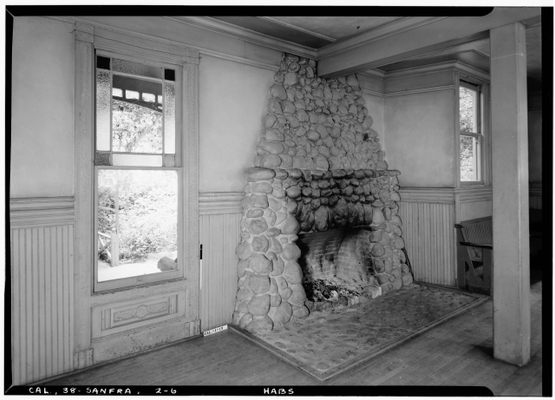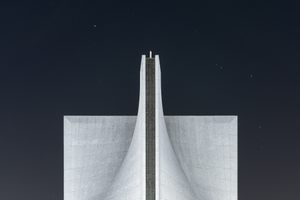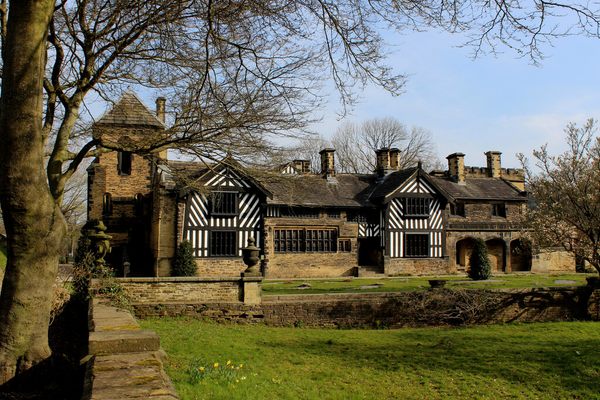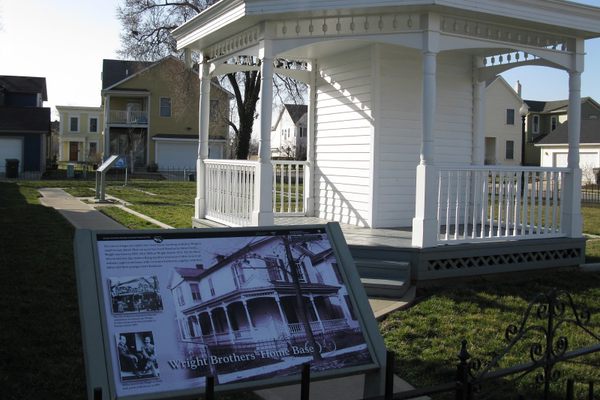About
Look closely at the front door and you can still see bullet holes. With stories to rival any saloon of the Old West, you might be surprised to find it tucked away in the sleepy Parkside District amidst the swaying Eucalyptus of Sigmund Stern Grove . The building—a yellow, gabled house in Stick-Eastlake style complete with a cupola and flagpole—is thought to be the oldest structure west of Twin Peaks still standing today. Its origins date back even further, to a time when the wild, unsettled dunes on the western side of the city were known as the Outside Lands.
In 1847, a year before gold was discovered at Sutter’s Mill, George Greene moved from Maine with his five brothers (along with their house, which was shipped around Cape Horn) to homestead 400 acres north of Lake Merced. They farmed and raised cattle for several decades in relative peace, at least compared to the gold-and-greed-fueled debauchery taking place across town on the Barbary Coast. That all ended in the 1870s, when the westward expansion of the city caused developers to set their sights on the Greenes’ land.
David Mahoney, owner of the neighboring Rancho Laguna de La Merced in what is now Daly City, claimed that the Greenes were not the rightful owners of their plot. He managed to win the land in court; however, when he went to assume control of it, the Greenes refused to leave their home. Mahoney hired a gang of mercenaries, the Greenes rounded up a posse, and a violent three-month siege ensued. The family built a sheet-metal fort in the canyon, just beside where the Trocadero currently stands, and planted a fence along their property line set with dynamite. They won the battle in the field and, some years later in 1887, won the battle in court as well.
In 1892, Greene built the Trocadero Inn as a rest stop for wealthy San Franciscans heading out to Lake Merced, Ocean Beach, or down the Peninsula. He promised a family-friendly resort with cabin rentals, deer hunting, and "the best trout pond in California." While the fishing was by all accounts excellent and some notable visitors did turn up, including sugar baron Adolph Spreckels, in reality, most of his clientele came for a day of carousing, drinking, dancing, gambling, and fighting that usually went long into the night. It was thanks to this shadier side that the Trocadero gained notoriety around the turn of the century as a raucous destination conveniently situated far from the watch of downtown policemen.
One story from the time describes how a bartender got his hands on a bear in order to entertain the guests. He tied it to a tree and went inside to set up the show (and likely have a tipple or two). When he came back out, the bear was gone. Locals were warned the next day about a bear on the loose, but thankfully no reports ever came back of it causing any harm.
The Trocadero’s most infamous moment came just a year after the 1906 earthquake and fire destroyed over 80 percent of San Francisco's buildings. In 1907, political boss Abe Ruef, who had made a long career of buying off politicians while claiming to clean up corruption, finally was indicted for municipal graft. He went on the lam and was eventually found and arrested on March 8 at the Trocadero. While legend goes that Reuf wouldn’t go down quietly and a gunfight reminiscent of earlier years ensued, the truth is that Reuf acted like a gentleman, and, befitting of his hideout, offered the officers a drink. In the end, he was sentenced to 14 years in San Quentin.
In spite of its long history of extralegal activities, Prohibition shuttered the doors of the roadhouse for good. Greene Jr. sold the property to philanthropist Rosalie Mayer Stern, who later turned it over to the city and had it named for her husband, Sigmund Stern. She also started the Stern Grove Festival, a free concert series that takes place every summer at the adjacent amphitheater. The building was remodeled in the 1930s by architect Bernard Maybeck, and the site is now used as a popular local wedding venue.
Related Tags
Know Before You Go
Please be advised that the parts of Sigmund Stern Grove may still be closed for repairs due to damage sustained from a broken water main in August 2021 . More recently, as of March 2023, the Trocadero CLubhouse itself is temporarily closed for repairs. A Eucalyptus tree fell through the roof during a major winter storm.
The western side, including Pine Lake Park, is still open.
Published
September 15, 2023
Sources
- https://sfrecpark.org/CivicAlerts.aspx?AID=864
- https://www.sfheritage.org/news/trocadero-inn-parksides-roadhouse-remnant/
- https://en.wikipedia.org/wiki/Trocadero,_San_Francisco
- https://www.sfgate.com/obscuresf/article/This-notorious-bullet-pierced-roadhouse-is-a-San-16809582.php
- https://www.sfgate.com/obscuresf/article/This-notorious-bullet-pierced-roadhouse-is-a-San-16809582.php
- https://www.sfheritage.org/news/trocadero-inn-parksides-roadhouse-remnant/
- https://en.wikipedia.org/wiki/Trocadero,_San_Francisco
- https://sfmuseum.org/hist/stern.html
- https://www.sfgate.com/obscuresf/article/This-notorious-bullet-pierced-roadhouse-is-a-San-16809582.php
- https://www.sfheritage.org/news/trocadero-inn-parksides-roadhouse-remnant/
- https://en.wikipedia.org/wiki/Trocadero,_San_Francisco
- https://sfmuseum.org/hist/stern.html
- https://www.sfgate.com/obscuresf/article/This-notorious-bullet-pierced-roadhouse-is-a-San-16809582.php

























